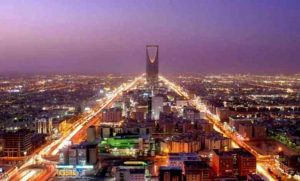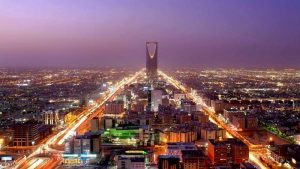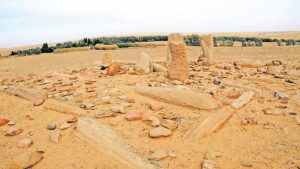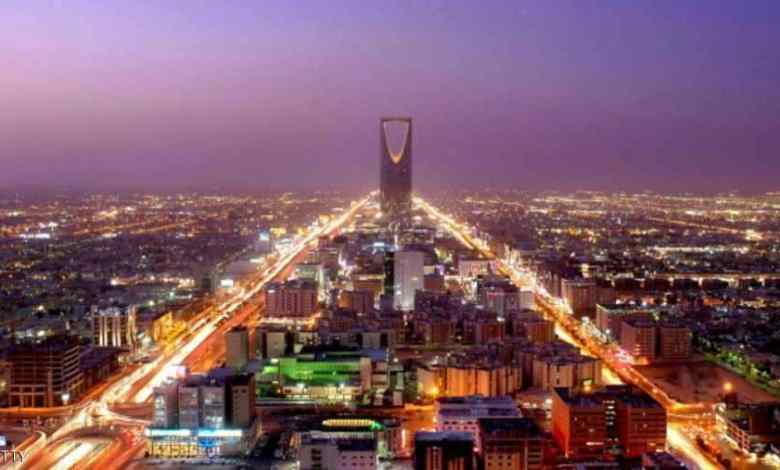Tourism in Saudi Arabia
Tourism in Saudi Arabia
Tourist places in Saudi Arabia

Tourism in Saudi Arabia Kingdom Tower in Riyadh
Information about tourism in Saudi Arabia
The Kingdom of Saudi Arabia is the second largest Arab country in terms of area after Algeria, and it is a prominent tourist destination in the world in terms of religious tourism, as it hosts once a year the rituals of Hajj, and throughout the year it hosts millions of pilgrims.
Tourism in the Kingdom of Saudi Arabia is one of the most developing sectors that have formed great development and attention in recent years, and within the National Vision 2030, the Kingdom of Saudi Arabia decided to invest in the tourism sector, and make it one of the most important pillars on which the vision is based, to change the concept of traditional domestic tourism and make it a competition. For foreign tourism to achieve a global tourism industry.
Tourism in Saudi Arabia
Saudi Arabia is the largest country in the Middle East, and it is located in the southwest of Asia. It forms the largest part of the Arabian Peninsula, with an area of about two million square kilometers.
It is bordered to the north by Iraq and Jordan, and by Kuwait to the northeast, and on the east by both Qatar and the United Arab Emirates in addition to Bahrain, which is linked to Saudi Arabia through the King Fahd Causeway on the Persian Gulf, and from the south it is bordered by Yemen, and the Sultanate of Oman from the southeast, as well as by The Red Sea from the west.
Arabic is the only official language, and the citizen population speaks Arabic in more than 20 local dialects, but the formal language is used in the media, education, and official and government dealings.

Culture and history
Saudi Arabia is characterized by the diversity of its topography as a result of its large area that constitutes most of the lands of the Arabian Peninsula, and has gone through the ages with successive geological phases and great climatic changes. There are different terrain, as there are mountain heights, valleys, sand dunes, plateaus and plains.
It is located along the coast of the Red Sea, the Tihama Plain, with a length of about 1100 km, and the Sarawat mountain range rises to the east, which ranges between 9,000 feet in the south, and the height gradually decreases as you head north to reach 3000 feet, and several valleys descend from it to the east and west.

This chain is followed from the east by the Najd plateau and its heights, which reach east to the Dahna desert and the Saman desert, and to the south, in an area interspersed with Wadi Al-Dawasir and bordering the Empty Quarter desert, and from the north the Najd plains extend to the Hail region until it connects with the Nafud desert and then the borders of Iraq and Jordan.
It also has some mountainous heights such as the Tuwaiq Mountains, Al-Arid, Aja and Salma Mountains. As for the Empty Quarter desert, it forms the southeastern part of Saudi Arabia with an area of about 640000 square kilometers and it consists of sand dunes and sabkhas. The eastern coastal plain on the Arabian Gulf consists of salt marshes and sandy areas.

A general view shows the Saudi capital Riyadh, late 03 October 2007. AFP PHOTO/HASSAN AMMAR (Photo credit should read HASSAN AMMAR/AFP/Getty Images)
SAUDI-RIYADH
The Kingdom of Saudi Arabia has three sea fronts, with a total coastline of about 3,400 km, one on the Gulf of Aqaba and the Red Sea, and the other two on the Arabian Gulf.
The Kingdom overlooks from the west the coast of the Gulf of Aqaba and the Red Sea from the borders of Jordan in the north to the borders of the Republic of Yemen in the south with a coast of about 2,400 km in length. It also overlooks from the east the Arabian Gulf with two sea fronts, one of which starts in the north from the border with Kuwait to the border with Qatar on Doha Salwa. With a coastline of about 1000 km, the other is southern, starting from the border with Qatar on the Gulf of Al Udeid to the border with the United Arab Emirates on Doha Al-Samira, with a coastline of about 100 km.

The climate of Saudi Arabia has been affected by several natural factors, the most important of which is the astronomical location, as the Kingdom is located within the dry tropical desert region in the western continents, and then it is located in the tropical high pressure area in winter, and within the hot low pressure sphere of southern Asia, which makes it in the midst of the dry winds in the winter. And dry continental winds also in summer. Therefore, the Kingdom’s climate is characterized by aridity throughout the year, and high temperatures, especially in the summer.
Tourist attractions in Saudi Arabia
The Saudi lands are home to many ancient civilizations from the pre-Islamic period, as the site of Al-Shuwaitiyah in Al-Jawf includes a settlement dating back to the Paleolithic period. The Well Hama site in the Najran region includes multiple rock inscriptions extending from 7,000 BC to 1,000 BC indicating that the inhabitants of this region used domesticated dogs and hunted the animals of the region, including camels, goats and cows, using spears and bows.
And in the area between Tathleeth Governorate and Wadi Al-Dawasir Governorate, a civilization known as the “Al-Maqar Civilization” that dates back to 9,000 BC, whose discovery proved that the Arab man was the first to domesticate horses, and that this civilization arose on the banks of an ancient river.
In the north of Al-Ula governorate, Mada’in Saleh (Al-Hajar) became famous, which was inhabited by the Thamudians in the third millennium BC, then by the Lihyanites in the ninth century BC, then by the Nabataeans in the second century BC. Among its most famous monuments are the “Divan of Mount Athlib” and “The Palace of the San’ite”, “The Unique Palace” and “The Girl’s Palace”.
In the Tabuk region, the province of Al-Bada was famous for Madain Shuaib, which was inhabited by the Median people in the second millennium BC, and in Taima a hieroglyphic inscription known as “Tayma’s Hieroglyphic Inscription” was found on it, written on it the name of Ramses III, one of the 20th Egyptian pharaohs (1183 – 1152 BC). It also found an Aramaic obelisk known as the “Stone of Tayma” that dates back to the period of the Babylonian King Nebo Ned (555 – 539 BC), and the inscriptions on it show that a priest named “Sun Ibn Batt or Zir” introduced the cult of an idol called “The Idol of Attack” to the city.
Al-Khali is located in the village of Al-Faw, which was the capital of the Kingdom of Kinda. A palace, a market, wells, writings, inscriptions and frescoes were found in it. Many cemeteries were discovered near Safwa in the Eastern Province known as “Jawan Cemeteries” and it includes four tombs and some monuments dating back to the second century AD. Najran also includes its old city, which is surrounded by a wall of 235 meters long and 220 meters wide, and settlement began in it in the year 600 BC. Birth and continued until the end of the third century AD, and this city witnessed the massacre of the Christians of Najran at the hands of the Jewish king Dhu Nuwas, and they were mentioned in the Qur’an as “the owners of the groove.”
In the Saudi era, many places became famous, such as the Muhammad bin Abdul Wahhab Mosque in Al-Dir’iyah, the Nassif House and Khuzam Palace in Jeddah, the Murabba Palace and Masmak Palace in Riyadh, and the Shubra Palace in Taif. There are also four sites that were included in the list of World Heritage sites after it was approved by the United Nations Educational, Scientific and Cultural Organization (UNESCO), where the beginning was with the Mada’in Saleh site, which was listed in 2008/1429 AH, and then the old Ad Diriyah area was added in 2010 / 1431 AH, and the Historic Jeddah region was registered in 1435/1431 AH. In the year 2015/1436 AH, the rock art in the Hail region was registered to be on the World Heritage List
Tourism in Saudi Arabia
A panoramic image of the Holy Mosque of Mecca
Muslims from all over the Islamic world visit the Grand Mosque in Makkah Al-Mukarramah and the Prophet’s Mosque in Medina, which are considered among the most important holy sites for Muslims and the number of their visitors is about 12 million Muslims annually. The rulers of the caliphs, sultans, kings and princes throughout Islamic history have been keen on caring for the Two Holy Mosques, and in the Saudi era they received more attention, expansion, construction and care.
There are also many other Islamic sites in the Kingdom of Saudi Arabia, including mosques, the most prominent of which is the Quba Mosque, which is known as the site of the first mosque in Islam, the Qiblatain Mosque, which gained its name from the incident of changing the direction of the qiblah, and the Mosque of the Answer. Al-Baqi ‘has been known as the cemetery of the people of Medina since the beginning of Islam, and near Mount Uhud is the cemetery of Uhud martyrs, which includes the bodies of 70 of the martyrs of Uhud.
There are also a number of historical wells, including the well of Aris or al-Khatim, Ghars well, al-Busa or al-Busa, al-Saqia, Othman or Rumah well. Near Wadi Al-Aqiq, you found many palaces belonging to the Companions, the Al-Bayt and the followers of the Umayyad era, including the Anbasa palace, the palace of Urwa bin Al-Zubair, and others. As for the most famous vestiges of the Abbasid era remaining until now, it is Ain Zubaydah, which was built by the Ummah of Aziz Zubaydah for the watering of pilgrims, and it also built watering basins for pilgrims on the road, known as the Darb Zubaydah, which begins in Baghdad and ends in Mecca. The most famous of the Ottoman monuments is the Hejaz Railway, with its stations in Medina and Mada’in Saleh.
